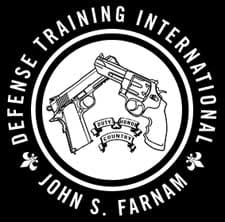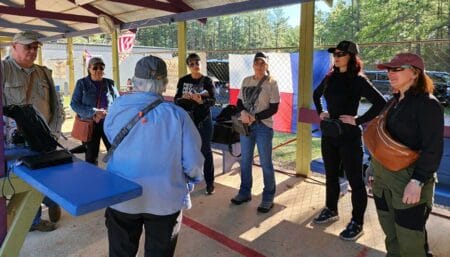Opinion

Ft Collins, CO –-(Ammoland.com)- “First, they tell you it will never work, and they can prove it! Then, they admit it does work, but insist it’s not important. Finally, they concede it is important, but assure you they’ve know about it for years!” ~ Kettering
Military Rifle Calibers:
During the black-powder era of the 18th and 19th Centuries, bullet diameters on military rifle cartridges ranged from 11mm to 19mm (45 to 75 caliber).
The terminal effect was surely “adequate,” but range and accuracy were very limited, particularly with smooth-bore muskets.
As we entered the breech-loading era and the second half of the 19th Century, bullet diameters were generally reduced. Rifled bores became the norm.
However, most bullets were still blunt, and because of black powder’s pressure curve, bullet velocities did not exceed the speed of sound by much.
With the advent of metallic cartridges, rims were used for the sake of obturation, consistent headspacing, and easy case extraction, particularly with the coming of spring-loaded, under-barrel, tube magazines, and center-fire cartridges.
With the invention of “smokeless” propellant in the 1880s, velocities were greatly increased, along with useable ranges (so-called because “smokeless” propellant residue is almost all gaseous, and the gas is mostly transparent; by contrast, black-powder residue is substantial and mostly particulate, hence the characteristic dense, white cloud and excessive fouling)
Aerodynamic “spitzer” bullets, reduced bullet diameter, and increased bullet length all became necessary, so as to step-up “ballistic coefficient” sufficiently to take full advantage of supersonic velocities that were now possible.
Sights became more precise and more precisely adjustable.
But, spitzer bullets simultaneously made tube-magazines obsolete, as the pointed bullet put pressure on the primer of the cartridge in front of it.
Spring-loaded, box magazines were the obvious solution, but that made the rim on rimmed cartridges a problem. One rim could block forward movement of the cartridge above it, thus retarding the feeding process.
The phenomenon was called “rim-lock,” and it quickly ushered-in the era of necked cartridges!
With necked cartridges, rims are gone, replaced with flush “extractor rings,” and the cartridge now headspaced on its shoulder, so smooth, uninterrupted feeding from double-column, box magazines (soon to become detachable) was now possible.
Rimmed cartridges, like the 30-40 Krag, 303 British, 8mm French Lebel, Soviet 7.62x54R all gradually became obsolete, although the 303 British hung-on through the end of WWII, and the 7.62x54R is still with us!
Through the first half of the Twentieth Century, military rifle cartridges were all between 6.5mm and 8mm (25-31 caliber), in order to achieve an acceptable rifle/ammunition compromise that balances:
- Adequate range
- Adequate penetration
- Accuracy
- Manageable recoil
- Weight
- Bulk
- Durability
- Overheating
- Barrel length
- Barrel life
- Magazine capacity, and
- Terminal effect
Those twelve issues represent competing, unavoidable trade-offs confronting weapon and ammunition designers. It is not possible to “adjust” any one of those without affecting all the rest. Go too far in any one direction, and you immediately run into deal-busting troubles!
Now that nations have equipped their armed forces for self-loading rifles, overheating, barrel life, weight, bulk, and durability have all become particularly thorny subjects!
In the first half of the Twentieth Century, horse-mounted cavalry units persisted, although they were mostly obsolete by the end of WWI.
However, with cavalry still a military consideration, “adequate terminal effect” implied an ability to take-down a horse with one shot!
In our modern era, with horses no longer a consideration, 5.5mm (22 caliber) bullets (5.56×45 NATO, 5.45×39 Soviet, 5.7×28 FN) have emerged and are considered (by some) appropriate chamberings for modern, military main-battle rifles, but there is far from “universal agreement” on that!
Inadequate penetration and inadequate range have been persistently (since the 1960s) cited as critical failings with this modern generation small-caliber military cartridges.
Interminable technological attempts to address these two issues have failed to silence critics, including me.
“‘Three Confusions’ that tirelessly haunt Western Civilization:
The first confuses feasibility with legitimacy:
‘When it can be done, it ought to be done!’
The second confuses feasibility with reality:
‘When it is supposed to work, it works!’
The third presupposes that technology, without fail, represents the ultimate good:
‘When it’s technologically superior, it’s absolutely superior!’” ~ Anon
/John

About John Farnam & Defense Training International, Inc
As a defensive weapons and tactics instructor John Farnam will urge you, based on your own beliefs, to make up your mind in advance as to what you would do when faced with an imminent lethal threat. You should, of course, also decide what preparations you should make in advance if any. Defense Training International wants to make sure that their students fully understand the physical, legal, psychological, and societal consequences of their actions or in-actions.
It is our duty to make you aware of certain unpleasant physical realities intrinsic to the Planet Earth. Mr. Farnam is happy to be your counselor and advisor. Visit: www.defense-training.com






As long as some of us love single shots like the sharps,rolling block,highwall.rimmed rifle cases will live.
I know its not tacticool but closing the lever on a highwall is a cool feeling and if only one is trying to get me,he might die from a single bullet
What?? “The phenomenon was called “rim-lock,” and it quickly ushered-in the era of necked cartridges!” Hmmm, I suspect this incorrect statement was not reviewed/edited/fact checked before publication, as there were at least a few dozen rimmed, bottlenecked, cartridges in use before smokeless powder was invented, and even after wards. And as mentioned by another post, rimmed bottlenecked cartridges feed just fine in properly designed box magazines, as they do in belt fed machine guns, even to this day. The second sentence should read: “The phenomenon was called “rim-lock,” and it quickly ushered-in the era of RIMLESS cartridges!” Thanks, if you… Read more »
The 303 British is still with us. There are all those Enfield rifles still in use. Some even desecrated by sporterizing them. I have a 1918 SMLE MKIII* restored to period original condition. It was rebarreled in 1921 by Enfield in England. No import marks. Allowing for my poor eyesight, it shoots 5″ groups at 50 yards. Iron sights are a problem with me. Bifocals. Neither lens puts the front sight in proper focus.
Modern military FMJ ammunition in .22 caliber is relatively inadequate for the purpose for which it was intended, which is to kill enemy soldiers Many reports from the battlefields in the Middle East indicate that the .22 caliber is not much of a manstopper on an individual round basis. The rationale for this type of ammunition was that a soldier could carry so many more rounds per unit of weight than 7.62 so that he could fill the air with a lot more metal. It would appear that the U.S. military feels that volume over accuracy is more important. However,… Read more »
Being bound by international law, the modern military use firearm ctg. had to go back to the ole drawing board. Yes, a civil war sized mini ball does a LOT of damage and it did expand because of the soft lead it was made of. Limbs were shattered in such a way as they required amputation. Then came smokeless power and the new, far ranging ability of modern, spitzer rifle rounds. The revolvers at the time were black powder driven as well, they also used soft, lead, expandable bullets. Along came smokeless powder and new, humane laws re; stopping the… Read more »